Torreparedones Archaeological Park, near Baena in Cordoba province is one of the best preserved Ibero-Roman settlements in Spain.
By Nick Nutter | Updated 14 Sep 2022 | Córdoba | Places To Go |
Login to add to YOUR Favourites or Read Later
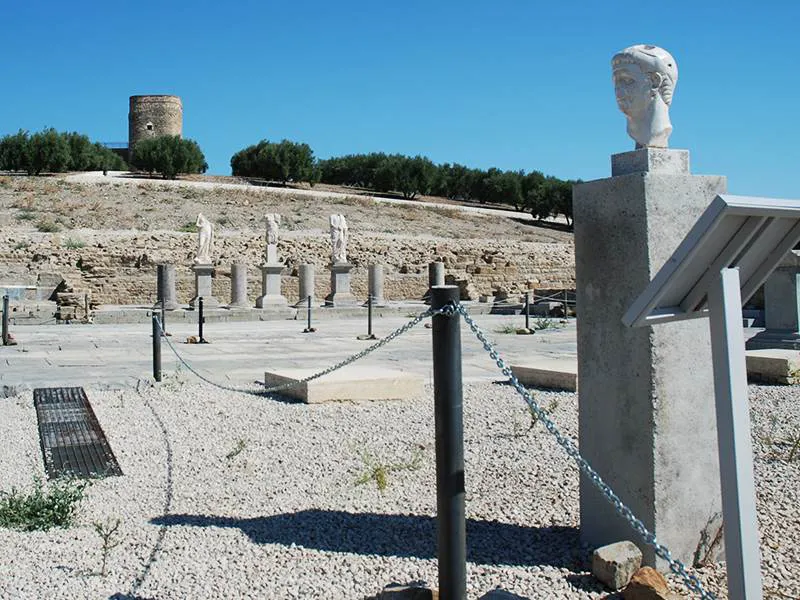
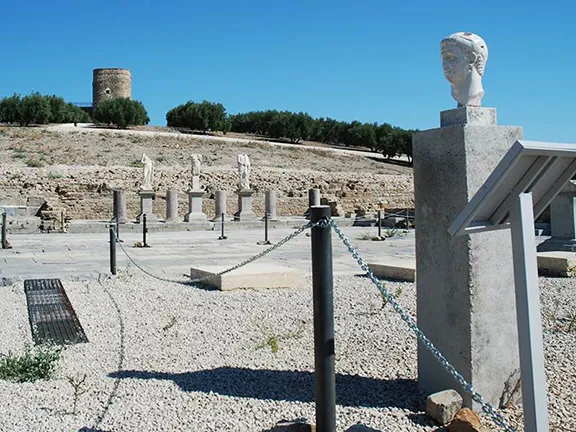
Torreparedones Forum
The Torreparedones Archaeological Park, also known as Torre de las Virgenes and Castro el Viejo, is one of the most important archaeological sites in Cordoba province with a settlement history beginning in the Neolithic period. It reached its peak of splendour during the Iberian – Roman period when it was probably known as Colonia Iulia Ituci Virtus. Thanks to excavation work from experts at the universities of Córdoba and Granada, it was discovered last summer (2019) that the city also had a 70-meter long amphitheatre, which was used as a venue for entertainment including gladiator fights and wrestling with wild beasts.
Covering a total area of about 11 hectares, only 10% of which has been excavated, Ituci was built on a 580 metre high hill on terraces with a network of streets crossing the town with a main road leading to the amphitheatre that was sited outside the town walls. But we leap ahead.
The first settlement occupied the top of the hill and dates to the 4th millennium BC. Neolithic farmers grew grain and other vegetable crops and left behind their hand grinders and stone tools.
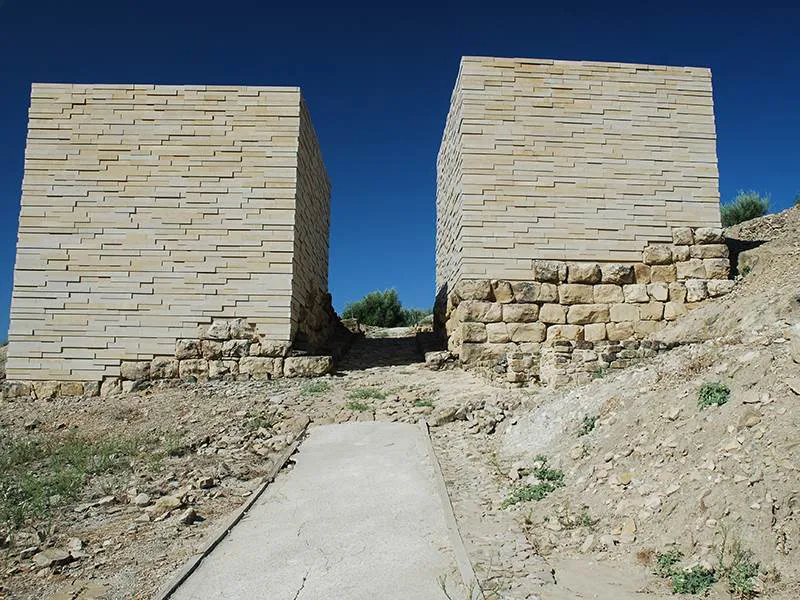
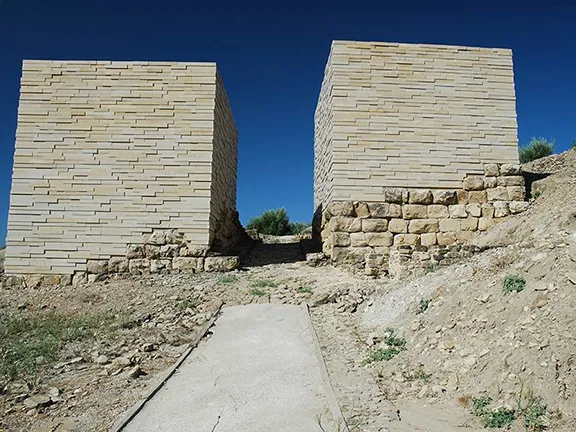
Torreparedones east gate
About 600 BC, the Iberians built an oppidum, a fortified settlement, entered through what is now the east gate. The gate was monumentalised during the Roman period, around the middle of the 1st century BC, a period when Julius Caesar was at war with Pompey’s sons. The fighting was particularly intense in this area. The gate had two doors, one on the outer edge of the wall, the other across the inner edges. On either side was a raised bench for pedestrians whilst animals and carts used the lower, wider part of the paved way.
Little else remains from the strictly Iberian period since the two cultures, Iberian and Roman, merged seamlessly. However, at the south end of the site, just outside the town walls, is an Iberian sanctuary from about the 3rd century BC. Here the Iberians left offerings to a goddess associated with healing and fertility, Caelestis Juno Lucina. A reconstruction of the sanctuary indicates that the flat roof had a slit cut through it. The slit was aligned with the position of the sun at midday, true south. It is proposed that the slit cast a beam of light on to a column. When the sun was lowest, at the midwinter solstice, the beam would strike the upper part of the column whilst at the midsummer solstice the beam would illuminate the length of the column. A solar calendar could have been created, overseen by a ‘priest’, that could have indicated the proper time to plant and harvest crops, holidays and so on by simply marking the column with horizontal marks. Numerous statuettes and figurines were found in the sanctuary, now on display in the museum at Baeza. The Romans generally tolerated the religions of the people in the occupied territories, even adding local gods and goddesses to their own pantheon. The sanctuary remained in use until at least the 1st century BC.
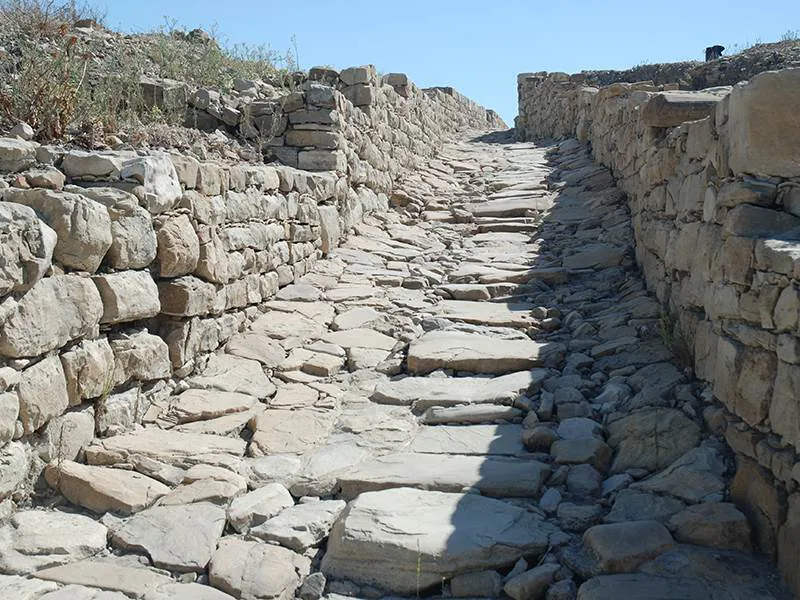
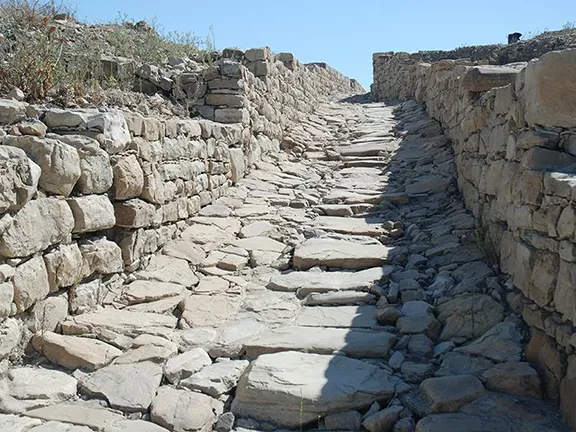
Torreparedones decumanus maximus
The largest space to be excavated is the forum area. Archaeologists found a rare epigraph in the paving. It reads, ‘Marcus Junius Marcellus, son of Marcus, from the Galeria tribe… of Augustus, paved the forum with his own money.’ This type of sponsorship was called ‘evergetism’ and was common amongst the Romans. By sponsoring large public works, important people could gain glory, honour, prestige and power. It is estimated that Marcus spent the equivalent of 600,000 Euros. His epigraph is recorded in ‘lettera aureae’, bronze letters, covered in gold, encrusted in stone by means of bolts into lead filled pre-cut holes in the stone. A rare marble bust of Tiberius Claudius Caesar Augustus Germanicus, better known as Claudius, was found in the forum. The body that was attached to the head was found nearby. When re-attached, the head was small in proportion to the body. Researchers found that the head was a re-modelled piece, the original statue represented Caligula, Claudius’s predecessor.
During the 1st century BC, a market was built alongside the forum, together with a temple, basilica and public baths. Just outside the east gate a necropolis was discovered dating from this period.
Other important finds include a gladiators helmet and, using lasar remote sensing known as LIDAR, a structure within the walls that will, almost certainly, turn out to be a theatre.
Outside the walls, and close to the visitor’s reception area, is the ‘Mausoleum of the Pompeyos’. This tomb was discovered in 1833 and was the first indication that there could be an ancient settlement nearby. In the tomb, the cremated remains of 12 people, all from the same family, were interred. The urns containing the ashes were inscribed with the name of the deceased. Although at the time the discovery caused great excitement amongst archaeologists internationally, there are now few records of the find.
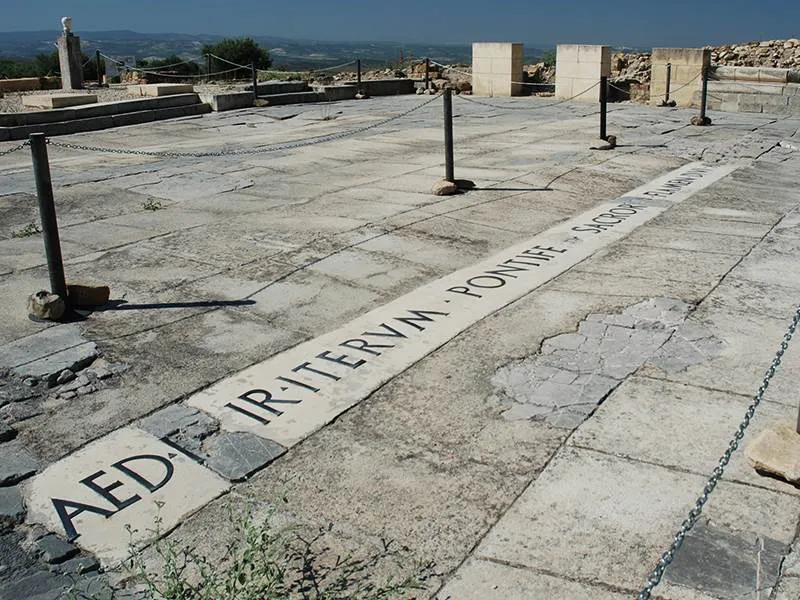
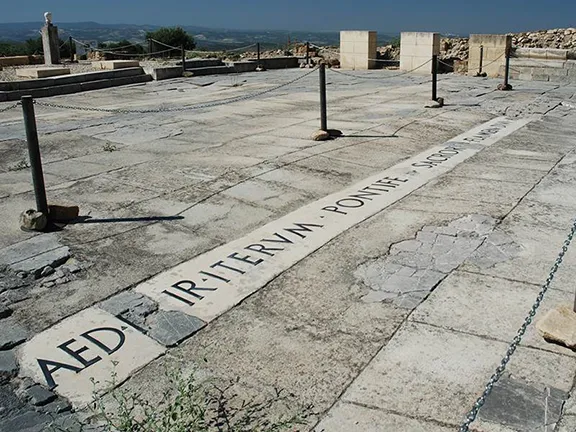
Torreparedones epigraph of Marcus Junius Marcellus
Archaeology indicates the site was occupied by a small number of people during the Visigothic period but there is no historical record. It is assumed that Ituci came under the jurisdiction of the bishopric of Egabrum.
There is however, plenty of evidence for occupation from the 8th century AD until the 12th century. Coins and ceramics have been found throughout the site and burials were continued in the east gate necropolis.
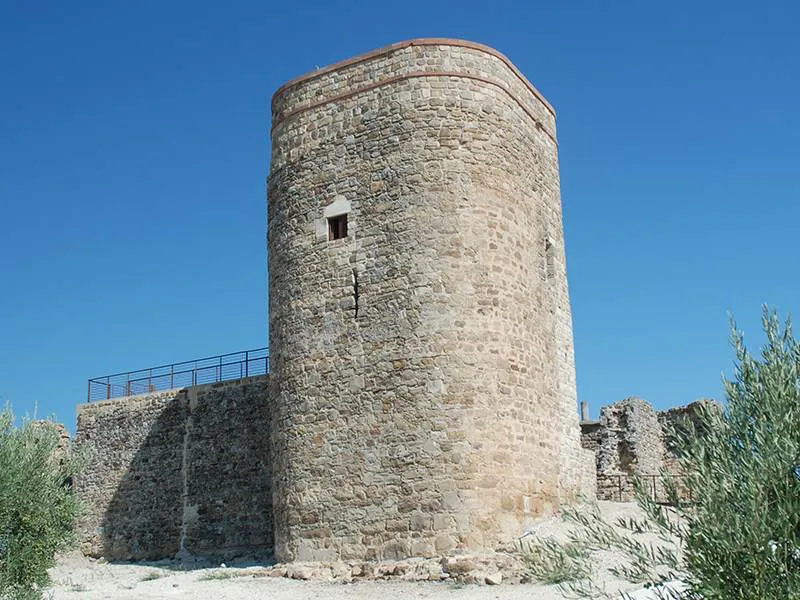
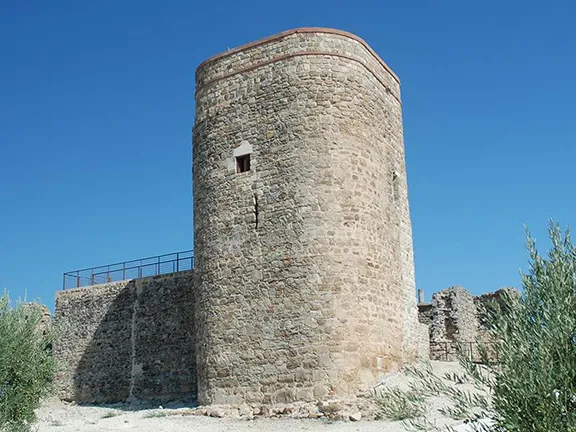
Torreparedones 14th century castle
Towards the end of the 13th century, the castle was built on the highest part of the hill. It was designed to help control the Castilian border with respect to the Nasrid kingdom. The keep provided protection for the people of Castro el Viejo and the castle was occupied by the governors of the council of Córdoba until it was abandoned at the beginning of the 16th century.
From whichever direction you approach, access to the site is via an unmade track. It is passable with a normal saloon car however, unless you have a four wheel drive you should avoid the 7 kilometre long tortuous route from Castro del Rio. Instead, make your way to the A 3125 about six kilometres north of Baena and take the somewhat shorter and better surfaced, signposted track.
WARNING Opening times are erratic. Ring the tourist office at Baena before you set off: 957 67 17 57